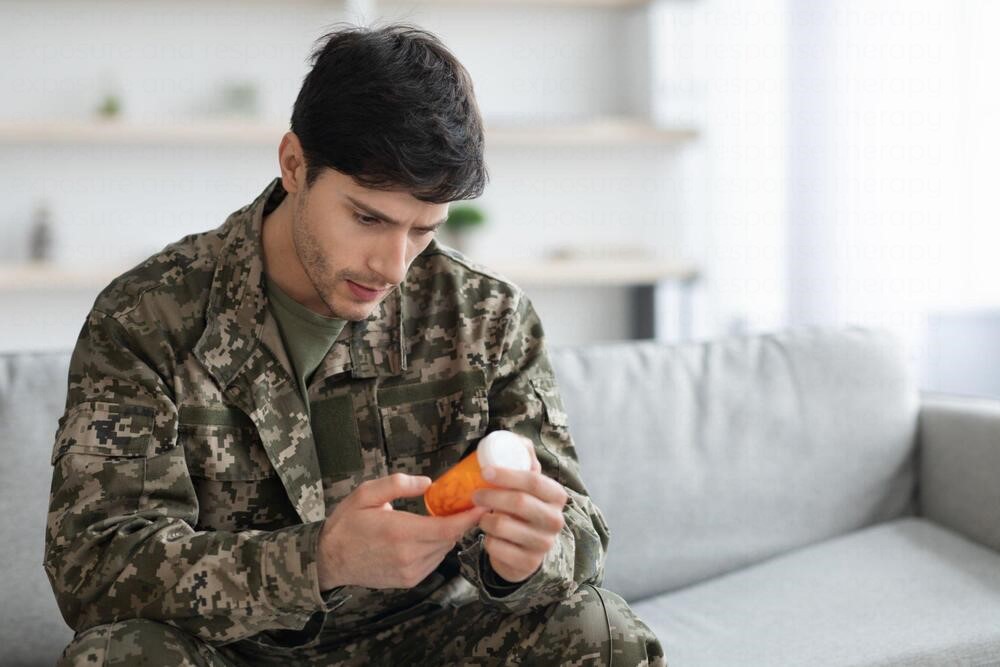Unlocking Your Mind: The Power of Aaron Beck’s CBT
Have you ever felt trapped in a cycle of your own thoughts? A relentless loop of worry, self-criticism, or hopelessness that seems to colour your entire world. It’s a profoundly human experience, one that can feel isolating and overwhelming. But what if there was a map, a practical guide to understanding and reshaping these internal patterns? Decades ago, one psychiatrist began to draw that very map, revolutionising our understanding of mental health and offering a new kind of hope. His name was Aaron T. Beck, and his work became the foundation of Cognitive Behavioural Therapy, or CBT.
This isn’t just another therapeutic theory. It’s a powerful, evidence-based approach that has empowered millions to reclaim control over their emotional well-being. Beck’s CBT is built on a simple yet profound idea, that our feelings and actions are not dictated by the events in our lives, but by our interpretation of those events. It’s a shift from feeling like a passenger in your own mind to becoming the driver. This article will explore the world of Aaron Beck’s CBT, demystifying its core principles, practical techniques, and enduring legacy. Prepare to discover the tools that can help you understand your thoughts, challenge your beliefs, and ultimately, change your life.

Who Was Aaron T. Beck?
Dr. Aaron T. Beck was an American psychiatrist widely regarded as the father of Cognitive Therapy, which later evolved into Cognitive Behavioural Therapy. Initially trained in psychoanalysis, his groundbreaking research led him to develop a structured, present-oriented psychotherapy aimed at solving problems and modifying dysfunctional thinking and behaviour. His work fundamentally changed the landscape of mental health treatment.

What was Beck’s background?
Aaron Beck’s journey into the human mind began not with a rejection of old ideas, but with a deep immersion in them. Born in 1921, he graduated from Yale Medical School and trained as a psychiatrist in the psychoanalytic tradition, a school of thought heavily influenced by Sigmund Freud. For years, he practiced and taught psychoanalysis, which posits that psychological distress stems from unconscious conflicts rooted in early childhood.
He was a dedicated practitioner, fully invested in the Freudian model. His early career was spent exploring the hidden depths of the unconscious, helping patients uncover repressed memories and unresolved childhood issues. Yet, Beck was also a scientist at heart, driven by a need for empirical evidence and measurable results, a trait that would soon set him on a collision course with the very theories he championed.

How did he develop Cognitive Therapy?
The birth of Cognitive Therapy was a product of scientific curiosity and intellectual honesty. While conducting research in the late 1950s and early 1960s to validate psychoanalytic concepts of depression, Beck encountered something unexpected. The prevailing Freudian theory suggested that depression was anger turned inward. Beck designed experiments to prove this, but his findings consistently pointed in a different direction.
Instead of finding dreams and thoughts filled with hostility, his depressed patients’ inner worlds were dominated by themes of defeat, deprivation, and loss. They held deeply negative views of themselves, the world, and the future. Beck realised that these conscious thoughts, which he termed "automatic negative thoughts," were not just symptoms of depression, they were a central driving force. He proposed a new "cognitive model" where distorted, negative thinking was the primary cause of emotional distress, not the other way around. This was a radical departure from psychoanalysis, shifting the focus from the unknowable unconscious to the accessible, conscious mind.

What is the Core Idea Behind Beck’s Cognitive Model?
The core idea of Beck’s cognitive model is that it is not events themselves that cause our emotional and behavioural responses, but rather our thoughts and interpretations about those events. This model provides a clear framework for understanding how our perceptions directly shape our reality, connecting our thoughts, feelings, and actions in a continuous cycle.

How do thoughts, feelings, and behaviours connect?
At the heart of Beck’s model is a simple, powerful triad, the connection between thoughts, feelings, and behaviours. These three elements are intricately linked and constantly influence one another. An external event happens, you have a thought about it, that thought triggers a feeling, and that feeling drives you to behave in a certain way. This behaviour then reinforces the original thought, creating a self-perpetuating loop.
Imagine you receive a brief, one-word email from your boss. If your thought is, "I must have done something wrong," you might feel anxious and worried. This anxiety could lead you to avoid your boss for the rest of the day, a behaviour that prevents you from discovering the email was harmless. This avoidance then strengthens your initial belief that you were in trouble, solidifying the cycle for the next time. Beck’s model shows us that by intervening at the "thought" stage, we can change the entire sequence.

What are automatic negative thoughts (ANTs)?
Automatic negative thoughts, often abbreviated as ANTs, are the fleeting, spontaneous thoughts that pop into our minds in response to situations. They are called "automatic" because they happen so quickly and habitually that we often don’t even notice them, yet we readily accept them as true. These thoughts are like a running commentary in our heads, constantly interpreting our experiences.
For someone struggling with depression or anxiety, this commentary is overwhelmingly negative, critical, and distorted. ANTs are persuasive because they feel like factual statements, not subjective interpretations. They might sound like, "I’ll never get this right," "Everyone thinks I’m a fraud," or "This is going to be a disaster." Beck identified these thoughts as a key target for therapy, as they are the immediate triggers for painful emotions and unhelpful behaviours.

What role do core beliefs play?
If ANTs are the leaves on a tree, core beliefs are the roots. Core beliefs, also known as schemas, are the fundamental, deeply ingrained assumptions we hold about ourselves, other people, and the world. These beliefs are often absolute and global, formed from early life experiences, and they act as a filter through which we interpret everything that happens to us.
These beliefs operate at a much deeper level than ANTs and often feel like undeniable truths. They typically fall into categories related to helplessness ("I am weak," "I am a failure"), unlovability ("I am unwanted," "I am defective"), or worthlessness ("I am bad," "I do not deserve happiness"). A negative core belief, like "I am incompetent," will consistently generate automatic thoughts like "I’ll mess this up" in challenging situations, fuelling feelings of anxiety and leading to avoidance. CBT works to not only tackle the surface-level ANTs but also to identify and gently modify these powerful, underlying core beliefs.

How Does Beck’s CBT Work in Practice?
Beck’s CBT works as a collaborative, structured, and goal-oriented process where the therapist and client work together as a team to identify, examine, and change unhelpful patterns of thinking and behaving. It is an active therapy that equips individuals with practical skills and strategies to become their own therapist, focusing on present-day problems and finding tangible solutions.

What happens in a typical CBT session?
A typical CBT session is highly structured and collaborative, feeling more like a workshop than an open-ended chat. At the beginning of each session, the therapist and client will set a clear agenda together, deciding what specific problems or goals to work on. This ensures the time is used effectively and remains focused on the client’s most pressing concerns.
The session involves reviewing progress from the previous week, including any "homework" assignments, which are a key part of the therapy. The bulk of the time is spent learning and applying cognitive and behavioural techniques to the issues identified on the agenda. The therapist acts as a skilled guide, teaching the client how to recognise and challenge their thought patterns. The session concludes by summarising key insights and collaboratively creating a new action plan or homework assignment for the week ahead, empowering the client to continue their progress outside of the therapy room.

How do you identify negative thoughts?
The first step in changing negative thoughts is learning to notice them. This is achieved through a process of self-monitoring, often using a tool called a "thought record" or "thought diary." The therapist will teach the client how to pay close attention to their emotional shifts throughout the day and to ask, "What was going through my mind just then?" when they notice a difficult feeling like sadness, anger, or anxiety.
A thought record typically has columns to log the situation (what happened), the emotions felt (and their intensity), and the specific automatic thoughts that accompanied those emotions. This simple act of writing thoughts down externalises them, making them easier to examine objectively. It transforms a vague feeling of distress into a concrete set of statements that can be analysed and questioned, breaking the automatic link between thought and feeling.

What are cognitive distortions?
Cognitive distortions, also known as thinking errors, are irrational and biased ways of thinking that we all fall into from time to time. For individuals struggling with mental health issues, these distortions become habitual and rigid, twisting their perception of reality and fuelling negative emotions. Beck and his colleagues identified several common patterns of distorted thinking that are a central focus of CBT.
One common distortion is All-or-Nothing Thinking, also called black-and-white thinking. This is seeing things in absolute terms, if a situation falls short of perfect, you see it as a total failure. Another is Overgeneralisation, where you come to a general conclusion based on a single incident or piece of evidence. If one thing goes wrong, you expect a never-ending pattern of defeat. A Mental Filter is when you pick out a single negative detail and dwell on it exclusively, so your vision of all reality becomes darkened, like a drop of ink that discolours a whole beaker of water.
Other key distortions include Disqualifying the Positive, where you reject positive experiences by insisting they "don’t count." Jumping to Conclusions involves making negative interpretations without definite facts to support your conclusion, which includes Mind Reading (assuming you know what others are thinking) and Fortune Telling (predicting things will turn out badly). Magnification and Minimisation, also known as the "binocular trick," involves exaggerating the importance of your mistakes or imperfections while shrinking your positive qualities.
Emotional Reasoning is another powerful distortion, where you assume that your negative emotions necessarily reflect the way things really are, "I feel it, therefore it must be true." "Should" Statements involve having a fixed idea of how you and others should behave, and overestimating how bad it is if these expectations are not met. Labelling is an extreme form of overgeneralisation where you attach a negative label to yourself or others, such as "I’m a loser" instead of "I made a mistake." Finally, Personalisation is where you see yourself as the cause of some negative external event which in fact you were not primarily responsible for. Learning to spot these distortions is a critical step toward challenging them.

How do you challenge and change these thoughts?
Once automatic thoughts and their distortions are identified, the next step is to challenge and re-evaluate them. This is not about positive thinking or simply replacing a negative thought with a positive one. Instead, it’s about becoming a detective of your own mind, examining the evidence for and against a particular thought in a balanced and realistic way.
The primary tool for this is Socratic questioning, a technique where the therapist asks a series of gentle, guiding questions to help the client evaluate their thoughts. Questions might include: "What is the evidence that this thought is true? What is the evidence that it is not true?" "What is the worst that could happen, and could I survive it?" "What is a more balanced or alternative way of looking at this situation?" This collaborative process helps the client develop a more rational, less biased perspective on their own. The goal is to formulate a "balanced thought" that acknowledges the complexity of the situation and reduces the intensity of the negative emotion.

What are behavioural experiments?
Behavioural experiments are one of the most powerful techniques in Beck’s CBT. They are planned activities, conducted in or out of the therapy session, designed to directly test the validity of a specific negative belief or prediction. They move the process of change from just talking and thinking into real-world action.
For example, if a person with social anxiety holds the belief, "If I speak up in a meeting, everyone will think I’m stupid," a behavioural experiment could be designed to test this. The client might agree to make one small comment in their next team meeting. The experiment isn’t just about doing the action, it’s about observing the outcome. Did people laugh? Did they ignore the comment? Or did they engage with the idea? The results of these experiments provide direct, powerful evidence that can be used to modify the original, fearful belief. They help people learn through experience that their feared outcomes are often unlikely or manageable.

For Which Conditions is Beck’s CBT Most Effective?
Beck’s Cognitive Behavioural Therapy is one of the most researched forms of psychotherapy, and it has been shown to be highly effective for a wide range of mental health conditions. Its structured, skills-based approach makes it particularly well-suited for problems where distorted thinking patterns play a central role.

Can CBT help with depression?
Yes, CBT is exceptionally effective for depression. In fact, the model was originally developed by Aaron Beck specifically as a treatment for depression. His research demonstrated that depressed individuals consistently exhibit a pattern of negative thinking he termed the "negative cognitive triad": a negative view of oneself, a negative view of the world or one’s experiences, and a negative view of the future.
CBT for depression directly targets these three areas. It helps individuals identify and challenge self-critical thoughts ("I am a failure"), re-evaluate pessimistic interpretations of life events ("Nothing ever goes right"), and counter feelings of hopelessness ("Things will never get better"). By changing these underlying thought patterns and encouraging behavioural activation, getting clients to re-engage in positive or meaningful activities, CBT can significantly lift mood and provide lasting skills to prevent relapse.

Is CBT effective for anxiety disorders?
CBT is considered a gold-standard treatment for most anxiety disorders, including panic disorder, generalised anxiety disorder (GAD), social anxiety disorder, and phobias. While the specific focus may differ, the core principles remain the same. Anxiety is often driven by thoughts that overestimate danger and underestimate one’s ability to cope.
In panic disorder, CBT helps individuals re-interpret the catastrophic misinterpretations of physical sensations (e.g., "My racing heart means I’m having a heart attack"). For GAD, it targets the constant "what if" worries about the future. For social anxiety, it challenges the fear of negative evaluation from others. Across the board, CBT provides concrete tools to face feared situations gradually, test out anxious predictions, and build a sense of confidence and control.

Can it be used for other issues?
The principles of Beck’s CBT have proven to be remarkably adaptable and are now used to treat a vast array of psychological issues beyond depression and anxiety. It has been successfully applied to post-traumatic stress disorder (PTSD), helping individuals process traumatic memories and change unhelpful beliefs about safety and trust.
It is also a key component in treating eating disorders like bulimia and anorexia, where it addresses distorted thoughts about body image, weight, and self-worth. Furthermore, CBT is effective for obsessive-compulsive disorder (OCD), substance use disorders, insomnia, and even anger management and relationship problems. Its focus on the interplay of thoughts, feelings, and behaviours provides a flexible yet powerful framework for understanding and changing almost any human problem rooted in unhelpful patterns.

How is Beck’s Model Different from Other Therapies?
Beck’s cognitive model carved out a unique space in the world of psychotherapy by blending elements from previous traditions while introducing a revolutionary focus on conscious thought. Its structure, timeframe, and core philosophy set it apart from both the psychoanalytic and purely behavioural schools of thought that dominated at the time.

What sets it apart from psychoanalysis?
The primary difference between Beck’s CBT and psychoanalysis is its focus on the present. Psychoanalysis delves deep into the past, seeking to uncover and resolve unconscious conflicts from early childhood over a long period, often years. In contrast, CBT is a "here and now" therapy. While it acknowledges that past experiences shape our core beliefs, the therapeutic work centres on the current thoughts and behaviours that are causing distress today.
CBT is also typically short-term and time-limited, often lasting for 12 to 20 sessions, with a clear goal of teaching the client skills to manage their own problems. The therapeutic relationship is a collaborative partnership, where the therapist is an active guide, rather than the psychoanalytic model of the therapist as a more detached interpreter of the unconscious. CBT prioritises conscious, accessible thoughts over hidden, unconscious drives, making it a more transparent and empirical process.

How does it compare to behavioural therapy?
Beck’s model is an evolution of traditional behavioural therapy, not a rejection of it. Behavioural therapy, based on the work of figures like B.F. Skinner, focuses exclusively on how conditioning and reinforcement shape behaviour. It operates on the principle that changing maladaptive behaviours (like avoidance) will lead to improvements in well-being, without necessarily exploring the underlying thoughts.
Aaron Beck’s great innovation was to add the "C" for "Cognitive" to the mix. He argued that you could not fully understand or change behaviour without addressing the crucial mediating step of cognition, the person’s thoughts, beliefs, and interpretations. CBT integrates the powerful techniques of behaviourism, like exposure and behavioural experiments, but it frames them within a cognitive context. It helps clients understand why they are avoiding something (due to a fearful thought) and uses the behavioural change to directly challenge that thought, making the therapy more comprehensive and often more powerful.
Frequently Asked Questions

How long does CBT usually take?
CBT is designed to be a short-term therapy. While the exact duration varies depending on the individual and the complexity of the issues being addressed, a typical course of CBT often ranges from 12 to 20 weekly sessions. The goal is to equip you with the necessary skills to become your own therapist, so the focus is on effective, focused work rather than prolonged therapy.

Is CBT a “one-size-fits-all” approach?
No, while the core principles of CBT are consistent, a good therapist will always tailor the approach to the specific needs, goals, and personality of the client. The therapist and client work together to create a formulation, a unique map of how the client’s thoughts, feelings, and behaviours are interconnected. The techniques and strategies used are then selected and adapted to best fit that individual’s unique circumstances.

Do I need medication alongside CBT?
Whether medication is needed alongside CBT is a personal decision that should be made in consultation with a qualified medical professional, like a GP or psychiatrist. For some conditions, particularly moderate to severe depression or anxiety, research shows that a combination of CBT and medication can be more effective than either treatment alone. However, for many people, CBT is a highly effective standalone treatment.

Can I practice CBT techniques on my own?
Yes, one of the greatest strengths of CBT is that its principles can be learned and applied independently. Many excellent self-help books, workbooks, and online resources are based on Beck’s cognitive model. Learning to identify automatic thoughts, challenge cognitive distortions, and use thought records can be incredibly empowering. However, working with a trained CBT therapist can provide guidance, support, and a level of depth that can be difficult to achieve on your own, especially when dealing with deeply ingrained patterns or severe distress.

***
Your mind is a powerful tool, but sometimes its patterns can hold you back from living the life you deserve. Understanding these patterns, as Aaron Beck taught us, is the first step toward changing them. It’s a journey of self-discovery and empowerment, but you don’t have to take it alone.
At Counselling-uk, we believe everyone deserves a safe, confidential, and professional space to navigate life’s challenges. Our qualified therapists are here to provide expert advice and compassionate support, helping you build the skills to rewire your thinking and transform your well-being. If you’re ready to take the next step, reach out to us. We’re here to help you find your way forward.




Cognitive Behavioral Therapy (CBT) is an evidence-based form of psychotherapy developed by Aaron T. Beck. It seeks to help individuals recognize how their thoughts and feelings are connected, and how they can positively influence them to reduce anxiety. CBT for anxiety focuses on identifying negative patterns of thinking and behaviors that can lead to increased levels of anxiety, as well as developing healthier coping mechanisms. CBT is based on the idea that our thoughts and beliefs have a direct impact on our emotions and behaviors. By changing the way we think about situations and events, we can better manage our feelings of anxiety.CBT is usually conducted in individual sessions with a trained therapist or counselor. During these sessions, the therapist will work with the person to identify their problematic beliefs and behaviors, then help them replace those with healthier alternatives. The therapist may also provide guidance on how to better manage stress or handle difficult emotions.